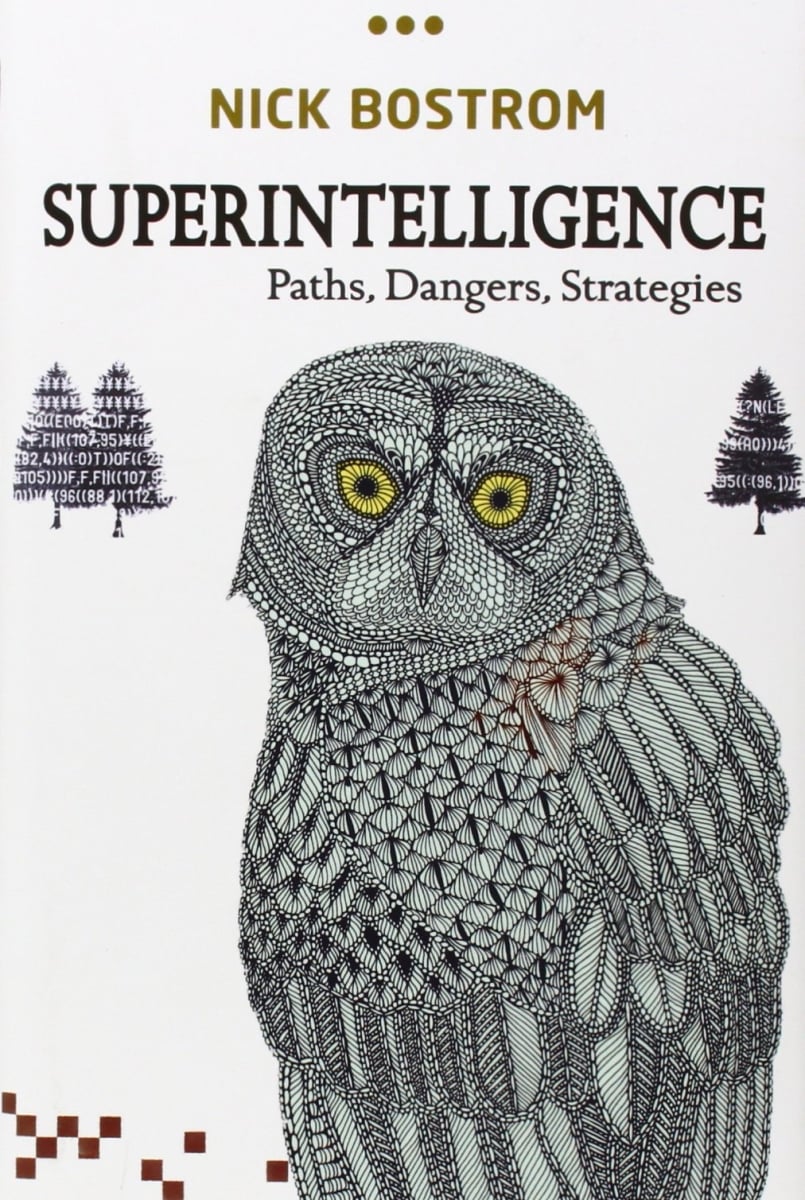
July 14, 2015
The Metropolis Summer 2015 Reading List
Architects and designers tell us their favorite reads of the season.
Few things bring architects and designers together more than an affinity for books. In celebration of the summer, we’ve asked a handful of designers for their personal and idiosyncratic new reads. Below, you’ll find their selections, which vary excitedly from topic to topic. Picks from Metropolis editors round out the list.
Francis Bitonti
Francis Bitonti Studio
All book covers courtesy their publishers
Superintelligence: Paths, Dangers, Strategies
Nick Bostrom
Oxford University Press, 2014
Everyone needs to be very concerned about artificial intelligence (AI) right now. We have been defined through history by our tools, and we are now creating a new class of tools that work with us but not only for us. This relationship is going to continue to evolve in increasingly complex ways. There is no separation between tech and culture, and nothing shows how thin the line is between humanity and technology like AI.
The Book Of Satoshi: The Collected Writings of Bitcoin Creator Satoshi Nakamoto
Phil Champagne
The Book Of Satoshi, 2014
I am obsessed with cryptocurrencies like Bitcoin at the moment. I see our future as designers as creating digital assets. The question I keep asking myself is how will the politics of the art and luxury market perpetuate in physical and material future that is increasingly reliant on our information-driven economy. It will have to evolve, and I think block chains are going to play a major role in the industry’s future.
Engines of Creation: The Coming Era of Nanotechnology
Eric Drexler
Anchor, 1987
One of the most compelling accounts of nanotechnology you will find. I am fascinated by Drexler’s descriptions of molecular assemblers and what this will means for design. It confirms my suspicions that block-chain technologies are going to be extremely important for governing and determining the value of physical objects and physical materials in the future. Every designer needs to read this.
Read our feature the work of Francis Bitonti Studio.
Sean Lally
Weathers
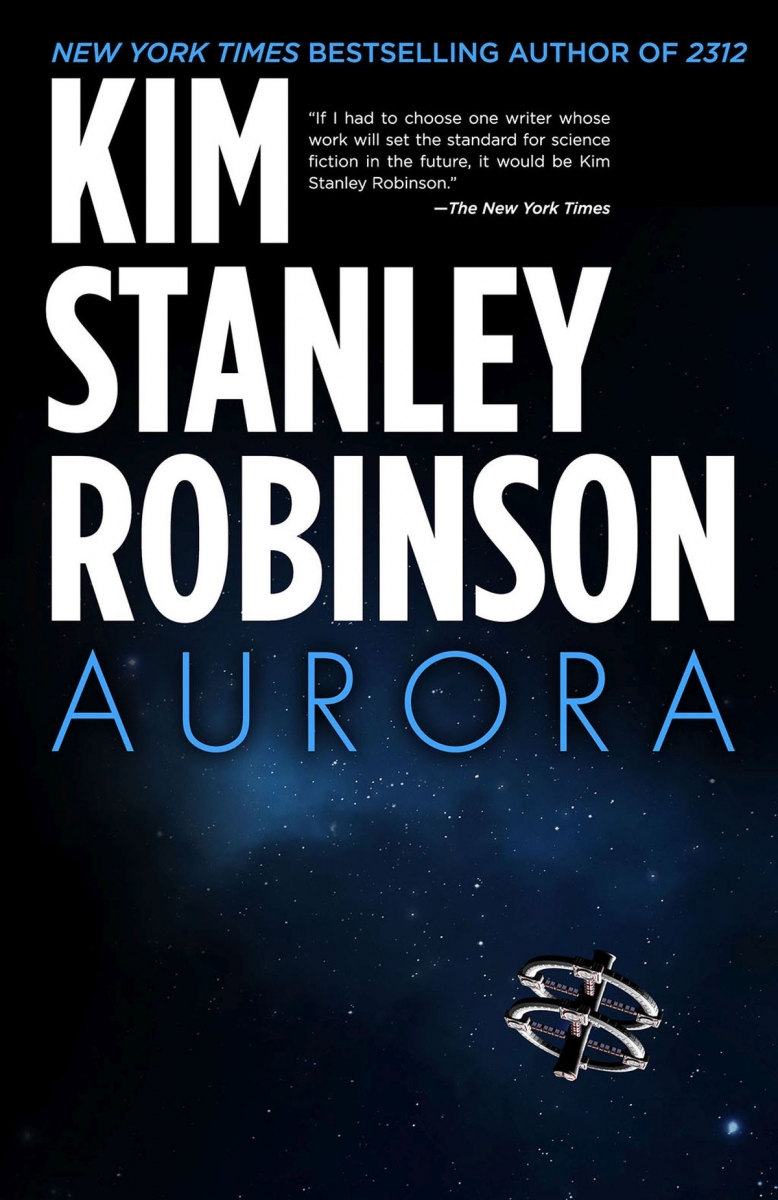
Aurora
Kim Stanley Robinson
Orbit, 2015
Since the publication of his book 2312 (and the Mars Trilogy before that), which imagined the biological and social changes awaiting our solar system, I’ve eagerly awaited Robinson’s Aurora. Sometimes referred to as an author of hard science fiction, Aurora isn’t a sequel to 2312, but continues to engage and speculate on the complexities and intersections of science, community, and politics that have made his work so intriguing in the past.
Energy Myths and Realities: Bringing Science to the Energy Policy Debate
Vaclav Smil
AEI Press, 2010
What makes Vaclav Smil books particularly interesting is his ability to explain the science behind campaigns for and motivations behind contemporary energy policy, both in its foreign and domestic forms. This book—one of the 32 titles Smil has published since 1976—delves into the feasibility and repercussions of policy choices that only get glossed over in most discussions.
H+/-: Transhumanism and Its Critics
Edited by Gregory R. Hansell, William Grassie
Metanexus Institute, 2011
Whether it’s wearable technologies that track and inform our health, medical procedures that enhance our existing senses, or genetic manipulation undergone prior to birth, this is a discussion that can’t be avoided and one that architects and designers must play a role in. A book that refrains from taking a position can be disappointing, but in this case, the essays are intended to provide multiple points of view to express just how complex these issues are and why we should be an informed public.
Hieroglyph: Stories and Visions for a Better Future
Edited by Ed Finn, Kathryn Cramer
William Morrow, 2014
Founded by writer Neal Stephenson and sponsored by the Center of Science and the Imagination at Arizona State University, Project Hieroglyph is aims to bring together writers and designers with scientists and engineers to develop “moon shot ideas” that could inspire future developments. The short stories in this book are one component of this larger project, but both are worth checking out.
Elon Musk: Tesla, SpaceX, and the Quest for a Fantastic Future
Ashlee Vance
Ecco 2015
Written with an investigative reporting feel, the book not only shines a light on the culture and economic wiring of the automotive and aerospace industries that Musk is striving to reinvent, but also reveals the personality and drive behind the man himself. It’s inspiring because of the scope and scale of Musk’s innovations, yet he often comes across less like a genius over-achiever and more like someone burdened to push ahead at all costs.
Read our profile of Sean Lally here.
Andrés Jaque
Office for Political Innovation
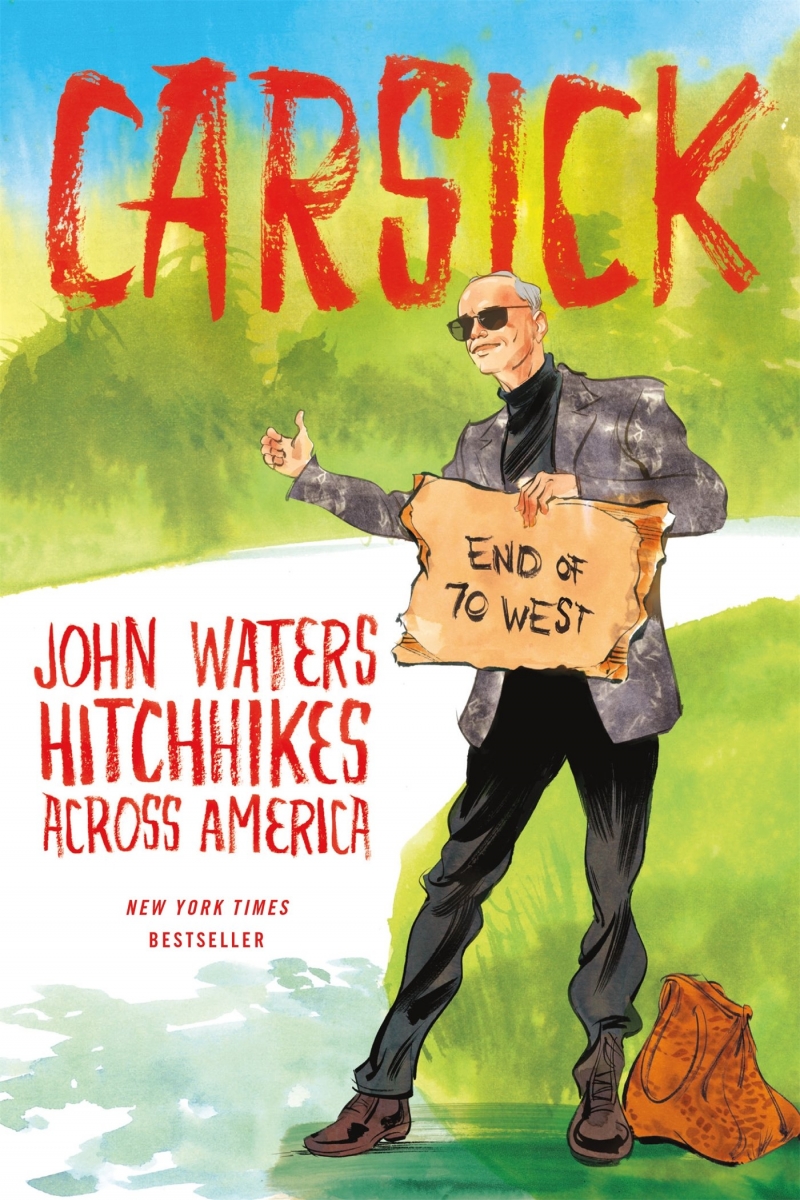
Carsick: John Waters Hitchhikes across America
John Waters
Farrar, Straus and Giroux, 2015
Waters’ work was a great influence in our House in Never Never Land, built in 2009. I love the way this book starts—“I haven’t felt this excited or scared for a long time. Maybe ever.” Could there be a better beginning? John Waters mixing up urbanism, sexiness, and dark motel rooms while hitchhiking across America.
Mediators. Aesthetics, Politics, and the City
Reinhold Martin
University of Minnesota Press, 2014
We could say that every aesthetic encapsulates its own politics (and not always in a conscious way). Martin probes this potential and invites us to go further, discussing the connection of aesthetics and urbanism with various forms of activism, including feminism, cosmopolitics, subaltern studies, and queer theory. Our office is named Office for Political Innovation because we want to maximize the political engagement of architecture, and Martin is one of the best reference points on the matter.
Inventive Methods: The Happening of the Social
Edited by Celia Lury, Nina Wakeford
Routledge, 2012
In my work, I defend the idea that design has the capacity to reshape societies. This collection of essays explores design, devices, and experiments as ways of transforming the way we deal with morals, politics, and economies.
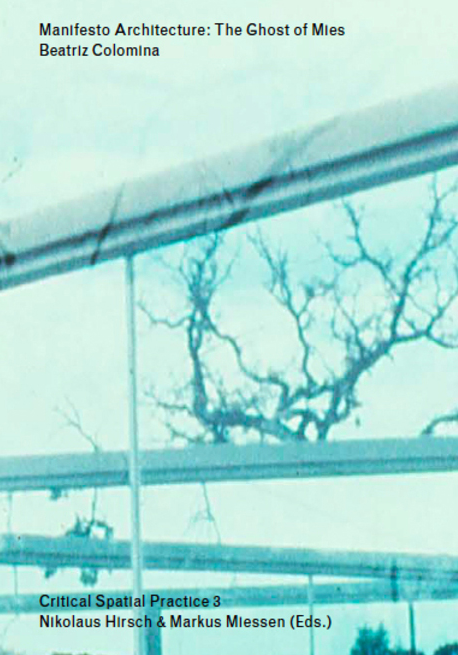
Manifesto Architecture. The Ghost of Mies
Beatriz Colomina
Sternberg Press, 2014
Colomina has explored the relationships between media and architecture through an impressive collection of books, articles, and exhibitions. This beautiful little book replaces the common figure of Mies van der Rohe as a kind of an isolated genius with a much more exciting idea—Mies as the sum of his collaborators and collaborations, the accidents and contradictions that surrounded him, and the whole armature by which his media persona was built up.
Sam Bompas
Bompas & Parr
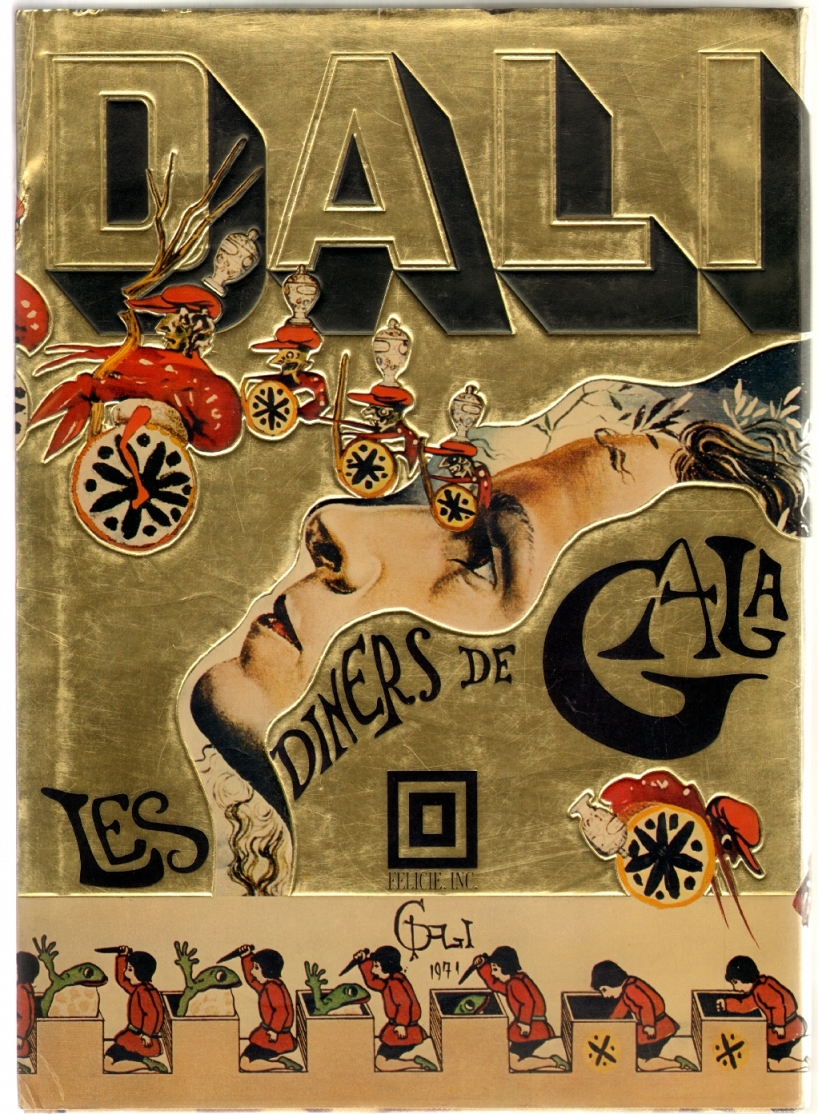
Les Diners de Gala
Salvador Dalí
Felicie, 1973
Dali’s cookbook is so hairy and musclely you can really gorge on it. He enlisted the services of the the finest French restaurants of the day such as Maxim’s and La Tour de Argent to write the recipes, but that didn’t keep him from taking all the glory. The battery of strange recipes ranges from an entire section dedicated to aphrodisiacs to the appropriate use of atteletes (meat jewelry) and sketches of limbless dwarves eating eggs. Not your usual cookbook, and the most money we’ve blown on a single volume.
Larousse Gastronomique
Prosper Montagné et al.
1961 edition
At Bompas & Parr we own three editions of culinary bible and handy doorstop Larousse Gastronomique. We always reach for the earliest version. It contains ancient and archaic kitchen skills and anecdotes that inspire and amaze. Sadly, much of the best material was expunged for later editions. For instance, the 1961 edition teaches you how to cook a duck ‘til done while still alive, unlocks the secrets of sabrage, and has over 200 recipes for eggs!
Playboy Gourmet
Thomas Mario
Castle Books, 1971
Mario is a sleazy but luxurious chef teaching you how to woo a girl with culinary skills and techniques. The recipes are basic, but the book has flair and panache when it comes to photography. Lots of soft focus, lens flares, and special in-camera effects bring to life stories about mysterious “sword and flame parties.”
Read our feature about food alchemists Bompas & Parr.
Stewart Hicks and Allison Newmeyer
Design W/ Co

Treatise: Why Write Alone series
Multiple authors
Graham Foundation, 2015
We are excited to read the many other contributions to the Treatise: Why Write Alone exhibition organized by Jimenez Lai earlier this year. (We contributed a booklet of our own.) A series of manifestos, portfolios, fictional scenarios, and histories, their content is sprawling, encompassing illusion, allusion, and, in some cases, delusion.
A Supposedly Fun Thing I’ll Never Do Again: Essays and Arguments
David Foster Wallace
Little Brown, 1997
We love David Foster Wallace, both his fiction and nonfiction, though the former can sometimes be a little too clever. We often reference his observations about daily life and the Midwest when describing our own work. There is also a new movie about his life, The End of the Tour, opening in July that we will like definitely check out this summer.
The Teachings of Don B.: Satires, Parodies, Fables, Illustrated Stories, and Plays of Donald Barthelme
Donald Barthelme and Kim A. Herzinger
Counterpoint, 2008
We were referred to Barthelme from a writer friend named Amy Bonnaffons while we were staying at the MacDowell artist colony a couple years ago. The structure and style of his writing is fragmented and funny. His work has inspired us to rethink the possibilities of combining text and image in architectural representation.
You Have to Pay for the Public Life: Selected Essays of Charles W. Moore
Charles W. Moore
MIT Press, 2004
One of the essays collected in this compilation, “Architecture and Fairy Tales,” has particularly stuck with us recently. It’s actually a lecture, presented by Moore at Tulane University in 1975, in which he observes situations in the world that create unexpected suspensions of reality, or “fairy tales.” He links these design decisions to his own work in a way that is super interesting.
Read about Design W/ Co’s 2015 Ragdale Ring pavilion here.
Amy Mielke and Caitlin Taylor
Water Pore Partnership
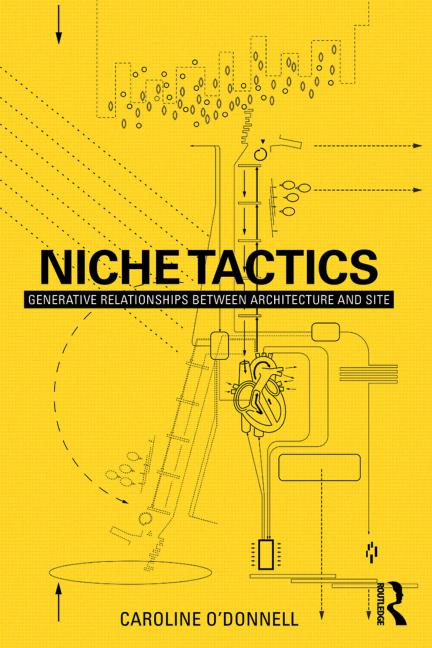
Niche Tactics: Generative Relationships between Architecture and Site
Caroline O’Donnell
Routledge, 2015
Niche Tactics could be your new tool for thinking about context. It looks away from generalist sustainability tropes and toward systems of on-site deviation. It is a very satisfying challenge to think about context as forces “dancing” with form, an ecology of relationships that are both idiosyncratic and opportunistic.
The Sixth Extinction: An Unnatural History
Elizabeth Kolbert
Henry Holt and Co., 2014
Elizabeth Kolbert’s newest book is an urgent call to action in the face of dramatically accelerating changes to the ecological balance of the planet. Told through a series of case studies, Kolbert reminds us not just of humanity’s interconnectedness with all other terrestrial species, but also articulates something crucial for us to understand as designers and architects: all the ecosystems that we experience daily have already been entirely and irreversibly remade by human migrations. That basic insight calls into question what is natural and what our role as architects can and should be in designing new ecologies.
Next Generation Infrastructure: Principles for Post-Industrial Public Works
Hillary Brown
Island Press, 2014
We love Hillary Brown, and this book is one of our favorites. More than a description of the vulnerabilities in our aging single-purpose infrastructure, Brown presents a catalog of projects that engage new integrated models for the next generation of our public works. Her analysis of tangible environmental metrics for cross-modal resilience in new infrastructure projects, in combination with the need for public engagement, is especially important.
Ganges Water Machine: Designing New India’s Ancient River
Anthony Acciavatti
Applied Research & Design, 2015
Although we haven’t yet read Anthony Acciavatti’s recent book, it’s at the very top of our pile for the summer. A detailed analysis of the continuous transformation of the Ganges River, the book shies away from simplifying the many complex personalities of the river in Indian culture and asks how its modern-day political, spiritual, environmental, and economic development presents design opportunities alongside massive infrastructural challenges.
An American Index of the Hidden and Unfamiliar
Taryn Simon
Hatje Cantz, 2013
After coming across this book a few years ago, I go back to it again and again. The photos and accompanying text are haunting and sparse, but each is an invitation into a mysterious and deeply unknowable space. It is particularly fascinating to peer into spatial conditions that are tightly calibrated to their forbidden, confidential, or dangerous purpose and observe how they are so fundamentally different from the spaces that we create as designers.
The White Album
Joan Didion
FSG Classics, 2009
If it’s a warm summer day and I’m standing in front of the fiction section of my bookshelf browsing for something to bring on the plane or take to the beach or the DMV, my gaze always somehow ends up in the Joan Didion section. I’ll never tire of her essays, which feel like the perfect antidote to too much architectural theory and analysis in the hazy summer months. And, of course, Didion’s obsessive and reverential inventory of the infrastructural machines that move water around California—as recounted in her essay “Holy Water”—ring especially true to two water-obsessed architects.
Read our profile of 2015 Game Changers Water Pore Partnership here.
Hillary Petrie
Egg Collective
From Here to There: Alec Soth’s America
Geoff Dyer
Walker Art Center, 2010
We first experienced Alec Soth’s photography in an exhibition at our university and have been fans of his work ever since. Soth’s work eerily depicts beautiful portraits and landscapes across America. We are real fans of the Mississippi series since we all spent time growing up near that mighty river.
The Old Man and the Sea
Ernest Hemingway
Scribney, 1995
This classic short book is about Santiago, an aging fisherman. Santiago’s craft is fishing, and his life is built around his relationship with the ocean and the creatures that float and swim beneath its surface. With his signature spare style, Hemingway describes one of Santiago’s solo journeys at sea, diving into his external battle with the ocean and its great fish, and his internal battle with aging and its affects on his body and mind.
Bienville’s Dilemma: A Historical Geography of New Orleans
Richard Campanella
University of Louisiana, 2008
Not your traditional history book, Campanella presents a thorough and fascinating exploration into how human decision has transformed the landscape (and vice versa) of one very unique and curious city.
Read our profile of Egg Collective here.
Leon Ransmeier
Ransmeier Inc.
SQM: The Quantified Home
Space Caviar
Lars Müller Publishers, 2015
As a New Yorker I am sensitive to the commodification and ongoing manipulation of residential architecture, and SQM offers a spectrum of short writings and imagery on the continuing evolution of domesticity. An interview with the controversial Brooklyn condominium architect Robert Scarano sits next to an essay about luxury basements in London, to name just a few of the book’s several compelling entries.
An Eames Anthology: Articles, Film Scripts, Interviews, Letters, Notes, and Speeches
Edited by Daniel Ostroff
Yale University Press, 2015
Required reading for anyone working in the field of design, though I’m sure it will interest a great deal of people in general. The texts range from personal correspondences to the storied but difficult-to-find “India Report,” a text commissioned in the 1950s by the Indian government for the purpose of educating small industry about design.
PIN–UP Interviews
Edited by Felix Burrichter and Andrew Ayers
powerHouse Books, 2013
I was given this in 2013 when it was released, but I haven’t finished it yet. The book is smartly designed in a manageable format and printed in a bold Arial Black typeface, perfect for reading on the beach. The impressive list of interviewees includes Ettore Sottsass, Julius Shulman, Office KGDVS, and many, many more. Now, I can finally stop pretending I read them all.
Read our profile of Ransmeier here.
George Ranalli
George Ranalli Architects

Le Corbusier: Ideas & Forms
William J. R. Curtis
Phaidon Press, 2015
The book has been redone and it is an exceptional history and a spectacular collection of images (drawings and photos) of Le Corbusier’s design process and work.
The Jazz Palace: A Novel
Mary Morris
Nan A. Talese, 2015
This book by my old school pal and acclaimed author Mary Morris takes the reader to her Chicago roots for a brilliantly told tale about family life and music during the uniquely combustible American Jazz Age.
Susan S. Szenasy
Metropolis
Publisher/editor in chief
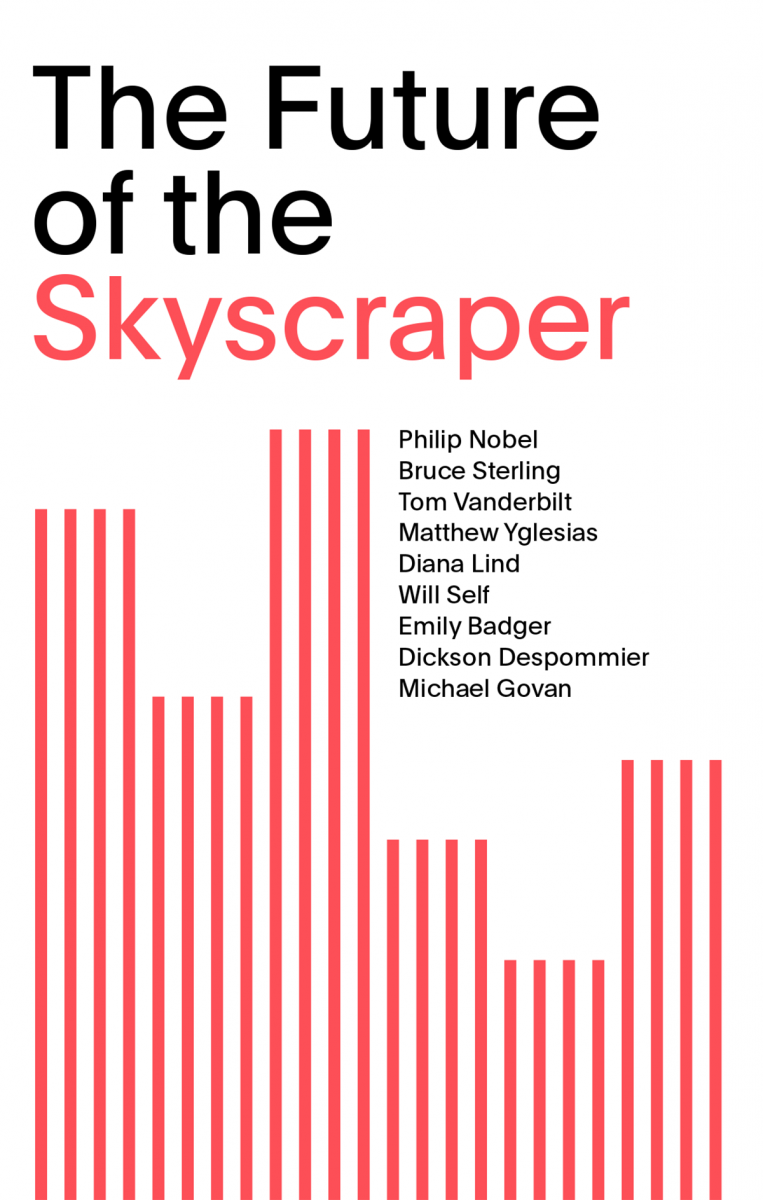
The Future of the Skyscraper
Edited by Philip Nobel
Metropolis Books, Art Book/DAP,
This little book contains essays by nine well-known critics and authors, including the cyber punk novelist Bruce Sterling, who in his essay writes, “Today’s supertalls may boggle the mind, but they are stunningly factual, immediately obvious, impossible to overlook.” And Dickson Despommier, a proponent of vertical farming, notes that “urban architecture is the mechanism that allows for the restoration of damaged eco systems by allowing the abandonment of rural farmland.”
Terror and Wonder: Architecture in a Tumultuous Age
Blair Kamin
University of Chicago Press, 2011
From the destruction of the World Trade Center to Santiago Calatrava’s sculptural Milwaukee Art Museum, the Pulitzer Prize-wining architecture critic of the Chicago Tribune writes thoughtfully and and gracefully about the most significant buildings of our time, putting them into urban and human context. Kamin fully understands that, as Frank Lloyd Wright said, “There can be no separation between our architecture and our culture. Nor any separation of either from our happiness.”
Design for a Living Planet: Settlement, Science, and the Human Future
Michael W. Mehaffey and Nikos A. Salingaros
Sustasis Foundation, 2015
The urban philosopher and the mathematician-physicist explain, in accessible language, how the sciences are transforming our thinking about and approaches to creating the built environment of the 21st century. The authors first presented their ideas in a series of popular essays on our website.
In Situ: George Ranalli Works and Projects
Oscar Riera
Ojeda Publishers, 2014
This beautifully packaged book, in its red cloth box with a CD version tucked into the back fold and a dye-cut picture of handsome wooden cabinet on the front cover, is an exquisitely produced collection of the architect’s work at all scales, from blown-glass goblets to tables to small and large houses, as well as public buildings. Many have been realized, others live on in sketches and meticulous models. In the book’s introduction, critic Michael Sorkin writes how “Renalli insists—his credo, really—that no space, no object for human use deserves less than perfect care.” There’s also a revealing interview, by this writer, with George on the eve of his being honored with the Sydney L. Strauss memorial award in 2010, given by the New York Society of Architects.
Paul Makovsky
Metropolis
Editorial Director
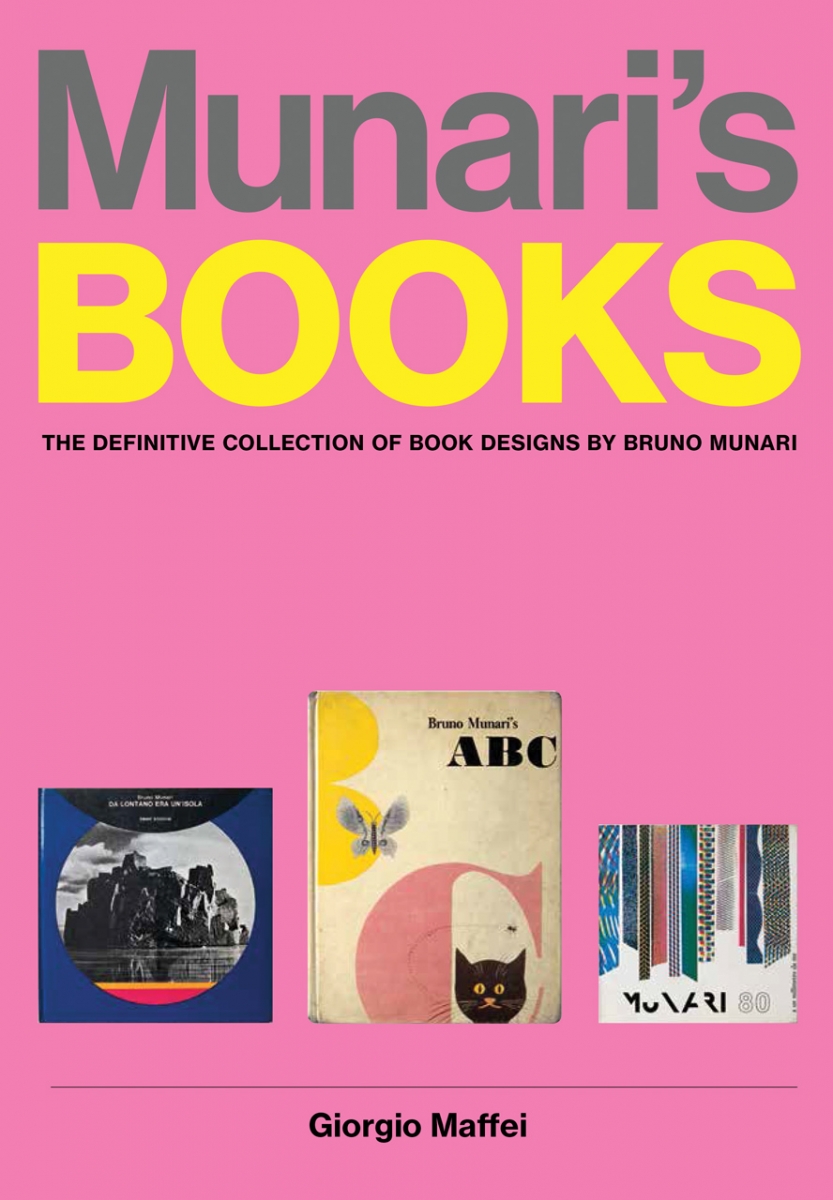
Munari’s Books: The Definitive Collection of Book
Giorgio Maffei
Princeton Architectural Press, 2015
This book surveys the work of one of my favorite graphic designers, Bruno Munari. It showcases over 60 of his publications, many that I hope to add to my design collection. I’m sure the critical essays will be informative, but this is mainly a book you flip through for hours of inspiration.
Artists’ Textiles 1940-1976
Geoff Rayner, Richard Chamberlain, Annamarie Phelps
Antique Collectors Club Dist, 2012
I recently saw an excellent exhibition on artists’ textiles at the Museum of Textiles in Toronto. Artists such as Picasso, Dali, Matisse, and Warhol all produced textiles, and the accompanying catalog for this show examines all types of fabrics that artists created during the midcentury period. It is filled with fascinating tidbits about subjects such as Lucian Freud, who, before finding fame, painted scarves during the 1940s. I know I’ll spend hours studying this book.
Supermannerism: New Attitudes in Post-Modern Architecture
C. Ray Smith
Dutton, 1977
With the resurgence of interest in Postmodern architecture, I want to reread some classic texts like C. Ray Smith’s 1977 Supermannerism, which each year gets better with age. Smith was an architecture editor during the 1960s and 1970s, and the book charts the design movement then unfolding in America that was radically reshaping our cultural consciousness. It highlights the work of young radicals such as Charles Moore, Hugh Hardy, Robert Venturi, and Alan Buchsbaum.
Man in Profile: Joseph Mitchell of the New Yorker
Thomas Kunkel
Random House, 2015
I’m classifying this under my horror-genre reading. Joseph Mitchell, the legendary New Yorker profile writer and author of Joe Gould’s Secret and Up in the Old Hotel, was the king of procrastination, showing up to work for 30 years and producing nothing. It’s every writer’s (and editor’s) nightmare.
Shannon Sharpe
Metropolis
Managing Editor
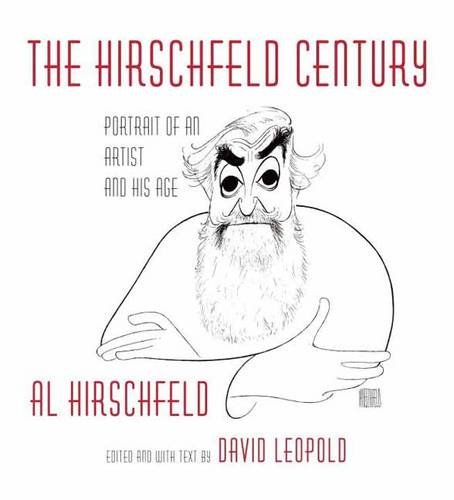
The Hirschfeld Century Portrait of an Artist and His Age
Edited and with text by Arthur Hirschfeld and David Leopold
Knopf, July 2015
For 82 years Hirschfeld created caricatures for newspapers, magazines, books, album covers, and much more. Leopold, an authority on the artist’s work, presents a gloriously illustrated, decade-by-decade account of the work and life of the irrepressible artist. For those wanting more, a major exhibition of Hirschfeld’s art is on display through October 12, 2015 at the New York Historical Society.
Design and Violence
Edited by Paola Antonelli and James Hunt, with Michelle Millar Fisher
MoMA, July 2015
In October 2013 the Museum of Modern Art launched an online experiment exploring compelling and provocative design projects. This companion book features leading voices in the design world, each commenting on one object chosen by the curators, ranging from an AK-47 to plastic handcuffs. The result is one of deep reflection and passionate commentary.
The Life of Saul Bellow: To Fame and Fortune, 1915-1964
Zachary Leader
Knopf, May 2015
The first volume of a two-part biography, this hefty book looks at the first half of the acclaimed novelist’s life. The author, a literary scholar, draws upon unprecedented access to Bellow’s papers, and more than 150 interviews with the novelist’s relatives, close friends, colleagues, and lovers.
James Irvine
Deyan Sudjic
Phaidon, May 2015
A collection of previously unpublished drawings, sketches, models, and images from the product and furniture designer’s archives, this monograph also examines Irvine’s life from a personal angle. Designers such as Marc Newson, Jasper Morrison, and Naoto Fukasawa provide anecdotes and insights on what defined Irvine as both a designer and a person.
God Help the Child
Toni Morrison
Knopf, April, 2015
In Morrison’s first book since her 2012 novel, Home, she tells the story of Bride, who was spurned by her mother for the extreme darkness of her skin. An examination of how childhood trauma can remain with people for their entire lives, this tale proves that even after 45 years, the author can still weave a lyrical and dramatic tale.
Avinash Rajagopal
Metropolis
Senior Editor

B is for Bauhaus, Y is for Youtube: Designing the Modern World A to Z
Deyan Sudjic
Rizzoli, 2015
In his famous rumination Six Memos for the Next Millennium, Italo Calvino defines the category of the encyclopedic novel. Filled with unending details and observations on everything they touch upon, such books try to contain a whole world within their jackets. This is an impossible task, of course, so the best encyclopedic books tend to be idiosyncratic and present a particular world view. Sudjic’s alphabetized design portrait of the entire modern world is very idiosyncratic, to say the least. “A for Authentic” begins with a green parka that the author owns, makes several stops through design history including the Obama campaign, and ends with a bar that Adolf Loos designed in Vienna in 1908. My head spinning pleasantly from that, I read on to discover that the book doesn’t have 26 chapters—as the title would suggest—but 39, because Sudjic simply couldn’t confine himself to one concept for some of the letters. This red volume simply gives and gives, and is impossible to read cover to cover, so it’ll probably keep me coming back to it over the course of this summer.
What is Architecture? and 100 other questions
Rasmus Waern, Gert Wingardh
Laurence King, 2015
True comic talent in architectural writing is rare—who ever read a book about buildings for a laugh? This irreverent little pink volume is a welcome exception that will at least elicit wry smiles, if not hearty guffaws. Architects Waern and Wingardh ask questions with a deadpan tone—“Is Dubai a city?”—then answer them with punchlines that beg for a laugh track (“No, not yet.”). More detailed arguments follow for each response, and like all good comedy, they are both incisive and persuasive.
Design, When Everybody Designs
Ezio Manzini
MIT Press, 2015
Manzini has been a longtime apostle for sustainable design, and in the past few years has become convinced that true sustainability will be a result of what he calls social innovation. Many readers, including myself, might roll our eyes because they might conflate social innovation with social design—that brief ineffectual craze that overtook the design profession in the aftermath of the Great Recession. Social innovation, Manzini insists, is something entirely different. It is not concerned with solving specific problems but seeks to create disruptive change, with the ultimate goal of sustainability. The other clarification Manzini offers is on the subject of what is left for a designer to do in a utopia of co-creation and systems design. Skeptical though I am, I suspect I will enjoy this exercise in hair splitting.
Make it New: A History of Silicon Valley Design
Barry M. Katz
MIT Press, 2015
The nomenclature changes every few years—tech hub, innovation district, even Silicon Alley—but basically, many cities and states around the United States are still in search of the ingredients that will help them recreate the success of Silicon Valley. Katz proposes a missing link in their efforts—design. This book not only traces how designers became an essential element in California tech culture, but also tracks the trajectories of many of the key firms who participated in Silicon Valley’s growth, including IDEO (where Katz was a fellow), frog, and Lunar. So even if you’re not invested in a technocratic urban agenda, there should be plenty of fascinating details here on a little-explored aspect of design history.
Recent Viewpoints
Viewpoints
Navigating the Path to Net Zero









